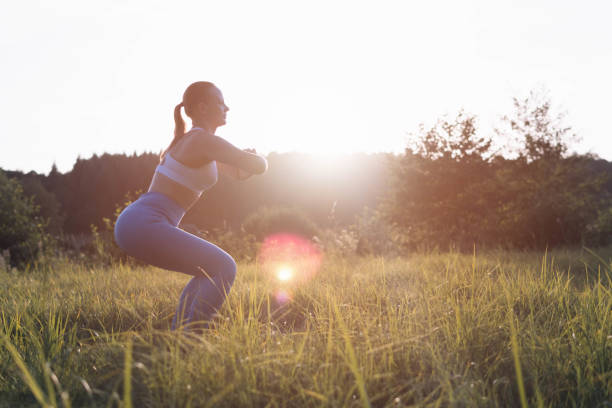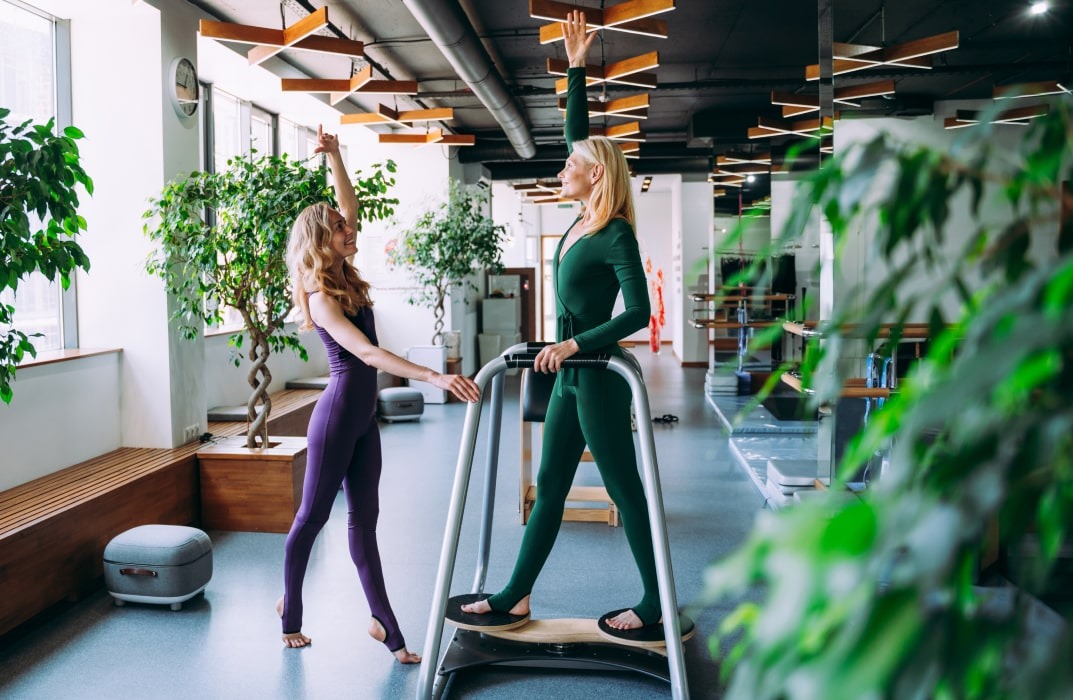
Shedding Light on Your Workout: The Impact of Light Exposure During Indoor vs. Outdoor Exercise
Explore the effects of light exposure on your workout performance. Learn how indoor and outdoor environments influence energy, mood, and overall fitness, and how to optimize light exposure for better results.
💪 Fitness Guru
44 min read · 19, Apr 2025

Introduction: The Hidden Power of Light During Exercise
When it comes to optimizing your workout routine, most people focus on physical factors like exercise intensity, duration, and nutrition. However, one often-overlooked element is light exposure. We typically think of light as something that influences sleep or mood, but it can play a significant role in how our bodies perform during exercise. The environment in which you exercise—whether indoors or outdoors—affects the amount and quality of light your body receives, which in turn impacts performance, recovery, and overall well-being.
But why does light matter during workouts? It all comes down to the circadian rhythm, our internal clock that governs many physiological processes, including sleep-wake cycles, hormone production, and energy levels. Light exposure influences this rhythm, and it can have a profound effect on how your body reacts to exercise. Whether you’re working out indoors under artificial lighting or exercising outside in natural sunlight, the type of light you receive can influence your workout efficiency, mood, and overall health.
In this article, we will explore the critical role that light exposure plays in exercise, comparing the effects of indoor and outdoor workouts. We’ll dive into the science behind light’s impact on performance, mood, and recovery and offer tips for optimizing your light exposure to get the most out of your fitness routine.
The Science of Light and Human Performance
How Light Affects Our Circadian Rhythm
Our bodies operate on a 24-hour cycle known as the circadian rhythm, which is primarily influenced by light exposure. Light is the most potent signal for regulating this rhythm. The presence of light helps synchronize biological processes such as the release of melatonin (the sleep hormone) and cortisol (the stress hormone), both of which have a direct impact on how we feel and perform.
For example, exposure to bright, natural sunlight in the morning helps regulate the circadian rhythm, promoting wakefulness and alertness during the day. On the other hand, dim light in the evening signals the body to wind down and prepare for sleep. This natural progression can have a powerful effect on exercise performance, as a well-regulated circadian rhythm supports peak physical performance during the day and improved recovery at night.
Light and Physical Performance
Research has shown that light exposure influences various aspects of physical performance, including endurance, strength, and reaction time. Natural light is thought to have a more significant positive effect compared to artificial light, thanks to its broader spectrum of wavelengths and intensity.
Studies have indicated that working out in natural sunlight can improve endurance by increasing vitamin D levels, which plays a crucial role in muscle function and recovery. Additionally, natural light exposure increases serotonin levels, a neurotransmitter that promotes feelings of well-being and can enhance performance during physical activity. Furthermore, sunlight has been linked to improved heart rate variability (HRV), a key indicator of overall fitness and recovery.
In contrast, working out indoors under artificial lighting may not provide the same benefits. While LED and fluorescent lights mimic daylight to some extent, they do not deliver the full spectrum of light that the body is naturally attuned to. The lack of natural sunlight can lead to lower energy levels, reduced mood, and compromised physical performance during indoor workouts.
The Effects of Light Exposure in Indoor Workouts
Artificial Lighting in Indoor Spaces
Indoor environments typically rely on artificial lighting to illuminate workout spaces. This lighting is often designed for visibility rather than biological benefits, and as a result, it can have unintended effects on the body. Fluorescent and LED lights are commonly used in gyms and home workout areas, but these lights lack the full spectrum of natural light that regulates our circadian rhythm.
While artificial lights can mimic the appearance of daylight, they do not have the same physiological impact as natural sunlight. The intensity of artificial light is also generally much lower, which means it might not signal the body to stay as alert or focused as sunlight would. This can lead to feelings of fatigue, reduced motivation, and lower workout performance, particularly during early morning or late evening workouts when your circadian rhythm is in the process of shifting.
Adjusting Artificial Lighting for Better Results
To mitigate the negative effects of artificial lighting during indoor workouts, consider making some adjustments to your environment. Here are a few ways to optimize the light in your workout space:
- Use Full-Spectrum Bulbs: These bulbs are designed to mimic natural sunlight and can help improve mood, energy, and focus. They emit a broad range of light wavelengths, similar to the sun, and can help maintain circadian rhythm alignment even indoors.
- Brighten Your Space: Ensure that your workout area is adequately lit. Dim lighting can cause your body to feel sluggish and less motivated. Aim for well-lit spaces that simulate daylight, especially if you're working out in the morning or late afternoon.
- Time Your Workouts Strategically: If you can, try to schedule indoor workouts when your body is naturally alert. For example, mid-morning workouts can benefit from natural light exposure through windows, which can help improve focus and performance.
The Benefits of Indoor Workouts with Proper Lighting
While outdoor workouts may seem more ideal for natural light exposure, indoor workouts with proper lighting can still provide significant benefits. For those who live in areas with limited sunlight or have tight schedules, indoor workouts offer the flexibility to exercise at any time of day. By investing in the right lighting, you can maximize the benefits of indoor training without sacrificing performance or mood.
The Advantages of Outdoor Workouts and Natural Light
The Role of Sunlight in Exercise
Outdoor workouts have distinct advantages, particularly in terms of light exposure. When you exercise outdoors, your body receives a full spectrum of natural light, which includes both visible light and infrared radiation. Natural light has been shown to improve mood and performance, and the benefits of sunlight extend beyond physical activity.
One of the most well-known benefits of sunlight is its effect on vitamin D synthesis. When sunlight hits the skin, it triggers the production of vitamin D, which is essential for bone health, immune function, and muscle strength. This is especially important for people who live in regions with limited sun exposure, as vitamin D deficiency can lead to muscle weakness and lower overall performance.
Mood and Mental Health Benefits of Sunlight
Exposure to natural sunlight during exercise is also beneficial for mental health. Sunlight boosts serotonin levels in the brain, which can enhance mood and reduce feelings of anxiety and depression. This is why outdoor workouts, especially in the morning, can leave you feeling more energized and positive for the rest of the day. Sunlight exposure also helps regulate melatonin production, ensuring a restful night’s sleep and improved recovery.
Studies have demonstrated that exercising outdoors in natural light can significantly reduce feelings of stress and improve overall well-being. The combination of physical activity and sunlight exposure offers a powerful mental health boost, making outdoor workouts an excellent choice for both physical and psychological benefits.
Outdoor Workouts and Cognitive Function
There’s also evidence to suggest that outdoor exercise can improve cognitive function. One study found that participants who exercised outside in natural light exhibited better cognitive performance compared to those who exercised indoors. This suggests that sunlight exposure may have positive effects on brain function, helping to improve focus, decision-making, and reaction time during workouts.
Optimizing Light Exposure for Your Workout Routine
Finding the Right Balance
The key to reaping the full benefits of light exposure during your workouts is finding the right balance between indoor and outdoor exercise. Ideally, aim to incorporate both into your weekly routine. Exercising outdoors during the day allows you to benefit from natural light and fresh air, while indoor workouts can offer flexibility when the weather is less than ideal or during nighttime workouts.
- Morning Workouts: If possible, aim to work out in the morning, as this is when natural light has the most impact on regulating your circadian rhythm. Morning sunlight helps to promote wakefulness and increases serotonin levels, setting the tone for a productive and energetic day.
- Evening Workouts: If you prefer evening workouts, consider using full-spectrum lighting indoors to mimic the effects of daylight and maintain alertness. Try to avoid harsh, blue-toned lights that can interfere with melatonin production and disrupt your sleep cycle.
- Take Advantage of Breaks: If you work indoors all day, make time for brief outdoor breaks to expose yourself to natural light. Even a few minutes of sunlight can help improve your mood and energy levels for the rest of the day.
Practical Tips for Maximizing Light Exposure During Your Workouts
Now that we’ve covered the science and benefits of light exposure, here are some actionable tips for optimizing your workout environment, whether you’re indoors or outdoors.
Tips for Outdoor Workouts
- Time Your Workouts to Catch the Sun: Early morning and late afternoon are the best times to catch natural light. The sun’s rays are more intense during these periods, providing optimal light exposure for regulating your circadian rhythm and boosting mood.
- Find Natural Settings: Whenever possible, choose outdoor locations like parks, trails, or beaches for your workouts. Nature provides a calming atmosphere that enhances both physical and mental well-being, and natural light exposure will be at its peak.
- Wear Protective Gear: If you're exercising outdoors during peak sun hours, make sure to protect your skin with sunscreen, a hat, or sunglasses. Excessive sun exposure can lead to skin damage, so balance is key.
- Use the Outdoors for Recovery: After your workout, consider spending some time outside to cool down and stretch. This provides additional exposure to natural light, which can help your body’s recovery process by reducing cortisol levels and promoting a sense of calm.
Tips for Indoor Workouts
- Invest in Full-Spectrum Lighting: If you're working out indoors, full-spectrum light bulbs can help simulate natural sunlight and improve energy and focus. These lights are available in various forms, such as bulbs for lamps and overhead lights, and can provide the full range of wavelengths that are beneficial for regulating your circadian rhythm.
- Increase Light Intensity: Make sure your workout area is well-lit, as low lighting can negatively affect your energy levels. Consider using bright LED lights or positioning lamps to brighten the space. Ideally, the lighting should be cool-toned to resemble daylight, which will help enhance your alertness and concentration.
- Create an Inviting Atmosphere: Whether indoors or outdoors, the environment plays a huge role in your motivation to work out. Create an environment that inspires you—add motivational posters, play energetic music, or use aromatherapy to set the mood.
- Take Short Outdoor Breaks: If you’re working out indoors, try to incorporate short outdoor breaks. For instance, take a 10-minute walk outside before or after your workout to expose your body to natural light. This can help improve your overall performance, mood, and energy levels.
How to Adjust Your Lighting Based on Goals
Different fitness goals may require different approaches to light exposure. Here’s how you can adjust your lighting strategy based on your workout objectives:
For Better Sleep and Recovery
If improving sleep and recovery is your main goal, focus on morning sunlight exposure to help regulate your circadian rhythm. Avoid bright artificial lighting in the evening, as blue light from screens can interfere with melatonin production. Opt for dim lighting or warm-toned lights to prepare your body for rest.
For Increased Energy and Performance
To enhance performance and energy levels, try working out outdoors during the day. Morning or afternoon workouts under natural sunlight can help boost serotonin and cortisol levels, making you feel more alert and energized. If you’re stuck indoors, ensure your space is well-lit with full-spectrum lighting to mimic the effects of natural light.
For Mental Focus and Stress Relief
If mental focus and stress relief are your top priorities, outdoor workouts in natural settings are ideal. Being in nature not only boosts light exposure but also helps calm the mind and reduce stress. If indoors, consider using soft lighting and adding elements of nature, such as plants, to create a more calming environment.
Conclusion
Incorporating light exposure into your workout routine is a powerful and often overlooked factor that can significantly impact both your physical and mental performance. Whether you prefer the controlled environment of an indoor workout or the natural benefits of outdoor exercise, understanding the role of light can help optimize your training and recovery.
Natural sunlight provides a multitude of benefits, including increased serotonin production, improved mood, and enhanced circadian rhythm regulation, all of which contribute to better energy levels, improved sleep, and more effective workouts. Outdoor workouts not only expose you to sunlight but also offer the added benefits of fresh air and the calming effects of nature, which can reduce stress and boost overall well-being.
On the other hand, indoor workouts can still be highly effective, especially when you control the lighting environment. By using full-spectrum lighting and bright, cool-toned bulbs, you can simulate the effects of natural light indoors, ensuring that your body stays alert and motivated.
Ultimately, the key to maximizing light exposure lies in finding the right balance between indoor and outdoor exercise, based on your schedule, fitness goals, and environmental factors. For those who live in areas with limited sunlight or need flexibility in their workout routine, indoor workouts can provide a great alternative without sacrificing performance.
By being mindful of how light affects your body, you can enhance not just your workout performance, but also your overall health, mood, and quality of life. Whether you're running outdoors or lifting weights indoors, the right light exposure can take your fitness routine to the next level.
Q&A Section
Q: What are the primary benefits of sunlight during workouts?
A: Sunlight helps regulate your circadian rhythm, boosts serotonin levels, and promotes vitamin D production. It enhances mood, improves performance, and helps with muscle recovery and overall health.
Q: Can indoor workouts be just as effective as outdoor ones?
A: Yes, indoor workouts can be effective, especially when you optimize lighting. Full-spectrum lights can mimic natural sunlight, supporting energy levels and alertness for optimal performance.
Q: How does light exposure influence my sleep quality?
A: Morning sunlight exposure helps regulate your circadian rhythm, promoting wakefulness during the day and helping your body naturally wind down in the evening for better sleep quality.
Q: What is the impact of artificial light on workouts?
A: Artificial light, especially from LEDs and fluorescents, lacks the full spectrum of natural light. While it can help visibility, it doesn’t provide the same benefits for mood, energy, or performance that natural sunlight does.
Q: Is it necessary to have full-spectrum lighting for indoor workouts?
A: While not absolutely necessary, full-spectrum lighting helps simulate daylight, supporting your circadian rhythm and improving mood, focus, and overall performance during indoor workouts.
Q: How can I maximize light exposure during my workouts?
A: Schedule outdoor workouts during the morning or late afternoon when sunlight is strongest. For indoor workouts, use full-spectrum lighting and aim to work out when natural light is available through windows.
Q: How does light exposure affect mental health during exercise?
A: Light exposure, particularly natural sunlight, helps boost serotonin levels, which can enhance mood, reduce stress, and increase focus, making workouts more enjoyable and mentally beneficial.
Q: Can working out in natural light help prevent vitamin D deficiency?
A: Yes, natural sunlight stimulates vitamin D production, which is essential for bone health, immune function, and muscle strength. Outdoor workouts provide an excellent opportunity to boost vitamin D levels.
Q: What time of day is best for exercising outdoors to get the most sunlight?
A: Morning or late afternoon are the best times for outdoor workouts, as the sunlight is strong and helps synchronize your circadian rhythm, increasing energy and performance.
Q: Can light exposure improve my recovery after a workout?
A: Yes, light exposure, especially natural sunlight, can help regulate your sleep cycle, reduce stress, and improve mood, which in turn aids in recovery by promoting restful sleep and reducing inflammation.
Similar Articles
Find more relatable content in similar Articles

Parenting and Fitness: Turning Playtime Into Workouts...
Discover how parents can seaml.. Read More

Anti-Aging on a Plate: Foods That Keep Your Skin Youthful an..
What you eat reflects on your.. Read More

Eco-Fitness: Training While Helping the Environment...
Eco-Fitness is a transformativ.. Read More

The Skin-Food Connection: What to Eat for Acne-Free, Radiant..
What you eat directly shapes .. Read More
© 2024 Copyrights by rFitness. All Rights Reserved.